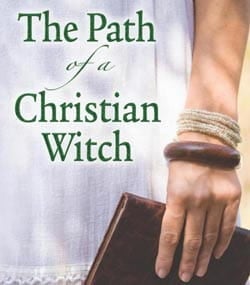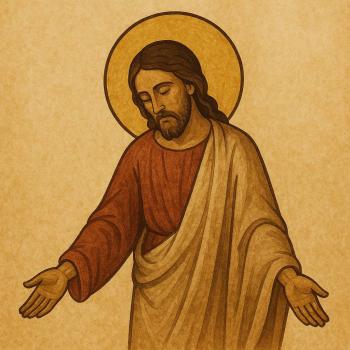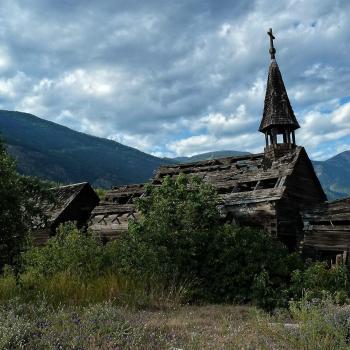 Travelling the road to Bethlehem each Christmas transports us into a Creation myth that births a transformative being. Despite repeated attempts to debunk the story, it self-resurrects and, like the star of the show, goes on to irritate comfortable worldviews.
Travelling the road to Bethlehem each Christmas transports us into a Creation myth that births a transformative being. Despite repeated attempts to debunk the story, it self-resurrects and, like the star of the show, goes on to irritate comfortable worldviews.
Like the Christmas story, the intriguing book The Path of a Christian Witch by Adelina St. Clair, speaks to a specific story, but also speaks to our lives and assumptions. You can read the book with a focus on the writing style, or you can view it through a theologian's eyes, concerned with how the text measures up alongside doctrine. You can also read it like a parable, allowing the story to penetrate your defenses and making you so uncomfortable that you have to investigate what is responding within you.
Within the first few pages of reading, I felt the cringe factor begin to rise. It is the same cringe factor that lurks around women's gatherings, leftovers from the ‘70s inducing in me a deep-seated anxiety that the words used and the rituals undertaken will be embarrassing.
To be honest, I worry that I might not be acceptable to men if I'm associated too closely with things labeled women, Wicca, Pagan, or feminist. Not just any men but the bishops to whom I promised obedience when I knelt before them to be ordained an Anglican priest. Only a few pages in and I was uncomfortable; this book was becoming more than interesting.
The spirited explorer part of me, which draws from a deeper knowing separate from institutionalized religion, understood that I'd already crossed a line, or stepped through the back of the wardrobe into another dimension. However you put it, the already thin boundaries around my religious understanding keep becoming more permeable, almost as though they cannot be maintained in the face of uncontainable Spirit.
Perhaps it was the day I found myself saying to a congregation that religious ritual is like casting a circle, making a safe space where our vulnerabilities can be held, a place to be refreshed before heading back into a world with different priorities. Or maybe it was the reading about Motherpeace Tarot that I'd been doing in concert with another woman priest. Whatever the trigger was, I was well primed to hear Adelina St. Clair's story.
Raised Roman Catholic in a pedestrian kind of way, everything changed for St. Clair when she attended a Catholic school. From thinking that religion was something to be put up with, St. Clair's spirituality suddenly bounded onto center stage, prompting dreams and visions and drawing the mystic out of her.
While studying science and immersed in the mechanics of things, St. Clair began questioning, concerned that no matter how rigorously she studied the building blocks of life, she could never put them back together and behold the flow of life. Taking refuge in a bookstore, she stumbled upon a book about extraordinary occurrences of angels in everyday life. It turned her world upside down. "What if?" she wondered, as she entered the words classes, witchcraft, and paganism into her search engine.
Although the portal to a world where the Goddess could be praised was right there at her fingertips, she was afraid. What if God disapproved and cursed her forever? The logical part of her brain thought that was ridiculous as she didn't even believe in a vengeful God, but the propaganda of the Church had been effective. Thankfully, she got over her anxiety and developed a devastating critique of the "golden cage of patriarchy, the legacy of thousands of years of Judeo-Christian rule," describing it "like a cancer poisoning us slowly" (p. 13).
Despite this new insight into her faith, the author maintains she still enjoys Catholic liturgy while knowing at a cell-impregnated level that church and faith are two different things. This ability to balance her personal knowing and institutional frameworks like teenagers holding hands is what allows her to sit in a Christian church in the presence of both God and Goddess, without betraying either (p. 115).
My experience in the Judeo-Christian tradition is that we have been less than honest and intellectually remiss in our wholesale acceptance of the monotheistic Father-Sky God idea. In doing so we have participated in the eradication of ancient religious understandings that honored female imagery and worship of the Great Mother. Today we'd call this destructive behavior colonization, easy to set in motion but difficult to dislodge its beliefs from the unconscious.
As I continued to read, I realized that I'd come to another place in my understanding of the Christian priest. The role seems to stand as a relative newcomer in the shamanic tradition, fitting a pagan perspective, intrinsic to how country folk instinctively reverence the turning of the moon and Earth's phases.




